
Nobody does meat on a stick better than Iranians, but classic Persian food is about much more, including earthy to elegant stews, Mike Peters discovers.
It was nutty. It was sweet. It was sour.
It was ... amazing.
|
From left: A lamb and eggplant stew topped with shredded potatoes, lamb shank with broad bean and dill rice, and panir sabzi, a salad of fresh basil and mint with radishes, scallions and cheese, all from Rumi Grill in Beijing. Wang Jing / China Daily |
|
Esfahan's immense square incorporates palaces, mosques and bazaars. Provided to China Daily |
|
At Beijing's Persepolis, the brilliant colors of Persian-style tiles come to life. Wang Jing / China Daily |
When foodies discover a new dish, we reach for easy comparisons.
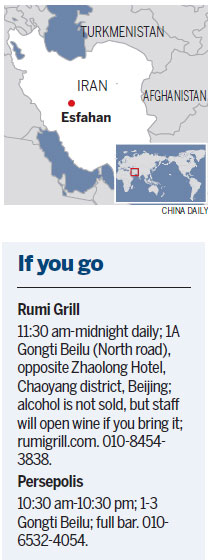
The phrase "It tastes like chicken" has become a joke ever since someone tried to describe tasting rattlesnake for the first time.
However, when I met my first bowl of fesenjen in the ancient Persian city of Esfahan several years ago, I was completely stumped.
I inhaled the steam coming off the rich, meaty stew and scooped a fragrant mound onto my fork.
A huge smile wreathed my face.
Eight minutes later, the bowl was empty - and my notebook was blank, too. I couldn't begin to describe it.
Eight years later, the rich stew of pomegranate paste, walnuts and chicken lingers in palate memory, recalling one of my favorite cities in the world.
Architectural wonder
Located in central Iran, Esfahan is a fairy-tale city of blue-and-yellow tiled walls, magnificent bridges and tranquil parks swarming with picnickers.
It was built around the immense Naqsh-e-Jahan (Imam) Square by the brilliant Shah Abbas I (Abbas the Great, 1587-1629), who took the Safavid empire to its peak and launched a new flowering of Persian culture. Abbas made Esfahan into a major Silk Road hub for traders in silk, spices, gold, silver and porcelain. He built his capital in an architectural spree perhaps only rivaled by China's Emperor Zhu Di, who moved his capital from Nanjing to Beijing, and began construction in 1406 on what would become the Forbidden City.
Esfahan is so grand, it was once renowned as "half of the world".
Robert Byron, author of the 1937 travelogue The Road to Oxiana, hailed Esfahan as "among those rarer places, like Athens or Rome, which are the common refreshment of humanity".
I suspect he had just eaten Persian food when he wrote the words.
For many food lovers who want to explore a foreign cuisine, the best answer is to go out to eat with a native of the country in question.
To find out what restaurant has the best traditional Persian food in Beijing, however, dining with an Iranian can sometimes add to your confusion.
For example, Iranian fans of near neighbors Rumi and Persepolis, located in the capital's expat haven of Sanlitun, are sharply divided on the question - though most have eaten at both places.
Some of the issues are more cultural than culinary: The venerable seven-year-old Rumi is run by an Iranian family of the Baha'i faith, and some Shia Muslims shun the place even though the restaurant does not sell alcohol out of respect for Iran's official norms.
Iranians in the Chinese capital in an official or business capacity often prefer Persepolis, an eatery on the same block that boasts former Iranian embassy chefs in its kitchen.
But Persepolis, sensitive to the secular business model of the entertainment-driven neighborhood, features not only an extensive alcohol menu but nightly belly-dancing, and those ladies really know how to shake it.
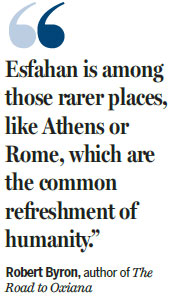
Taster's choice
Since I'm neither Iranian nor Muslim, I just put my face in my plate and enjoy both places.
I've been a fan of Rumi Grill since I first tasted its fesenjen, which was as delicious as the version I'd tasted in the famous Esfahan restaurant called Shahrzad.
That distinctively sweet-and-sour stew, with its undercurrent of pomegranate, blossomed in Shahrzad's aura of stained-glass windows, luxurious Qajar-style murals and elegant black-suited waiters.
I didn't care as much for the Persepolis version, which was too tart for my taste and not like the "real" one I had in Esfahan.
But my Iranian friends here insist that both renditions are perfectly authentic: Rumi's leans to the Esfahan palate (sweeter) while Persepolis caters to northern Iranian tastes (sourer). If this argument sounds familiar, you've probably been stuck between foodies from Shanghai and Beijing bickering about whose grub is better.
So while both restaurants serve, for example, a fine fresh shirazi salad of cucumber, tomato, lemon juice and sumac, the latter herb and its distinctive bitterness is more assertive at Persepolis.
More rice dishes with a tart edge from barberries and dill will emerge from Persepolis' kitchen, too, while Rumi's diners seem keener on platters with saffron rice. You can guess which restaurant probably has more vinegar in stock, and which offers more desserts.
Both restaurants offer a pleasing array of kebabs, marinated to amazing tenderness in yogurt, lemon and spice combinations that are trade secrets.
Like bread, rice is central to most platters: basmati rice may be simmered with diced beef, baby lima beans or a fragrant mix of fresh dill, parsley, cilantro and spices. Zereshk polo is saffron rice topped with barberries and currants.
The decor of the two restaurants is even more different than the kitchen work, but again, both very authentic.
Rumi boasts a more universal look of elegance, with high ceilings, off-white walls and sand-colored reproduction antiques.
Persepolis, on the other hand, glories in the vibrantly colored tiles that might grace the courtyard of Abbas the Great.
You don't really have to decide which is better. But if you want to try, a culinary voyage of discovery awaits.
Contact the writer at michaelpeters@chinadaily.com.cn
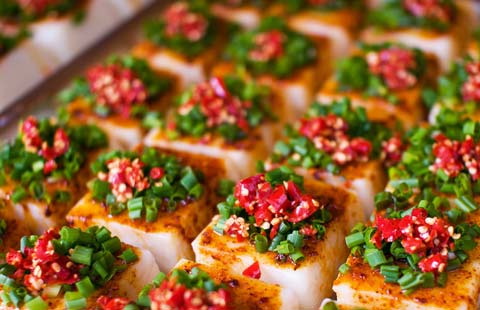
China's top 10 foodie cities |
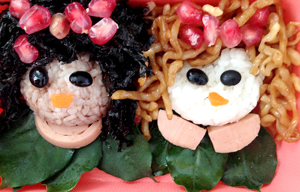
Cute boxed meals |
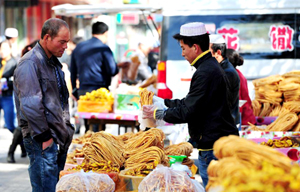
Muslims greet annual festival of Eid al-Adha in Yinchuan |
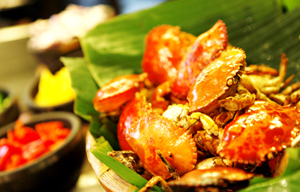
Cafe Noir hosts Singapore food festival |
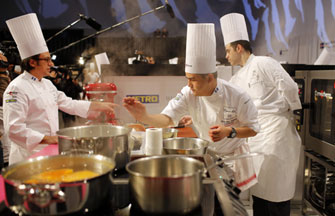
Bocuse d'Or Final gastronomic competition in France |
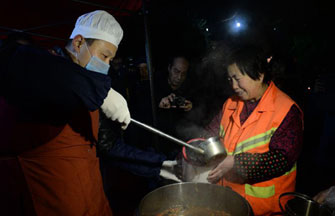
Temples in Xi'an distribute free Laba porridge |
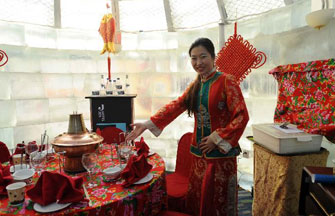
Ice house restaurant opens to public in Shenyang |
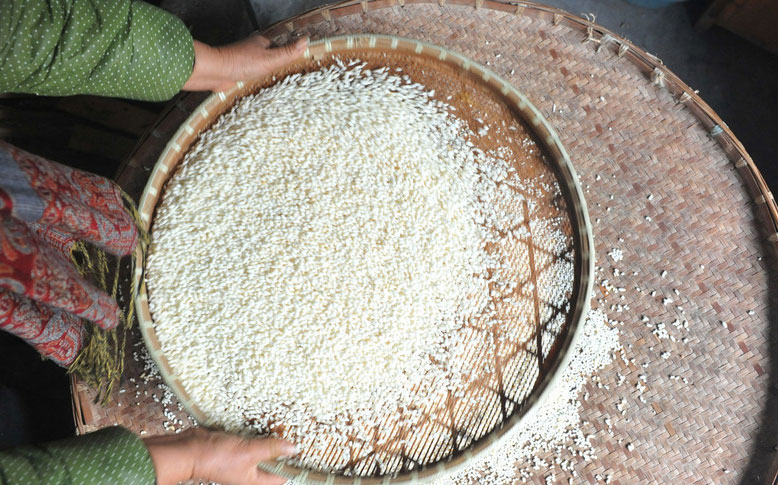
Dongmi tea in Zhejiang |